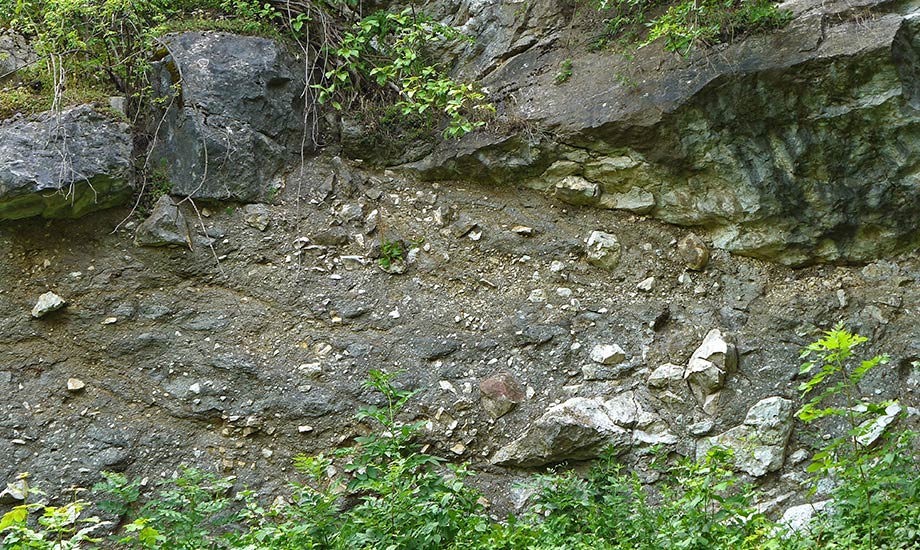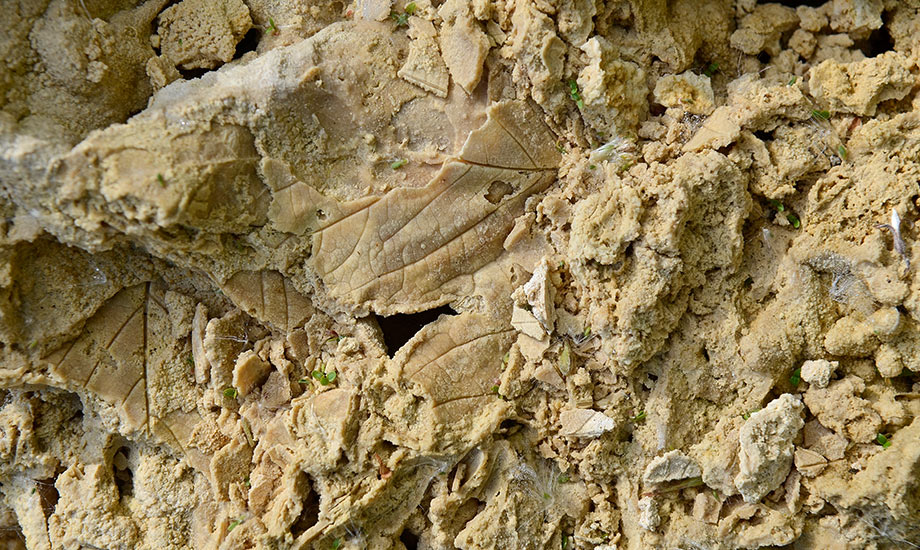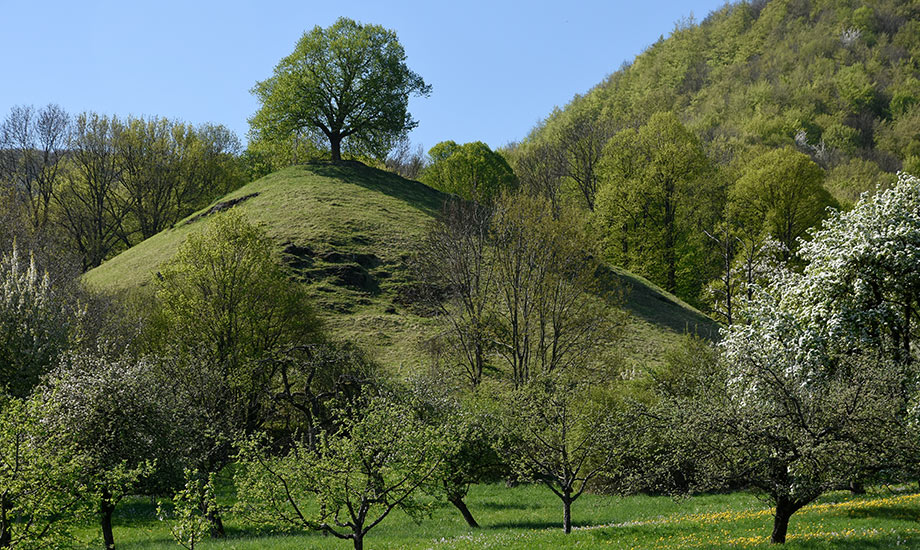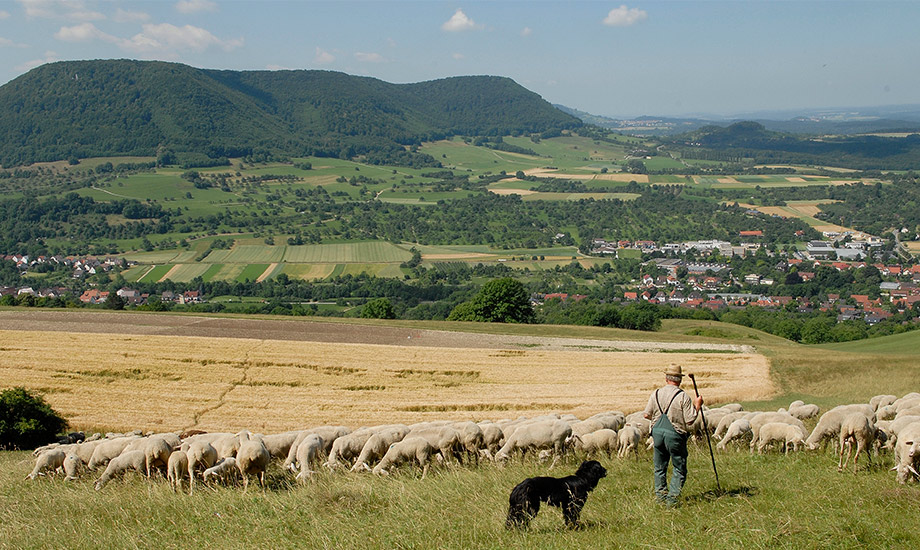Vulkanschlot Aichelberg
Volcanism shaped the landscape
The Aichelberg volcanic vent tells us about the exiting chapter of volcanism in the Swabian Alb. When it was still active, the land surface was 250 meters higher than today. Over time, rocks eroded and the volcanic vent was exposed. It remained until today due to the high resistance of its rock and is visible today as scenic hill in the countryside.
In the Neogene period, 17 to 11 million years ago, rock melts erupted in tubes. In the process, fragments of older rocks were transported to the top and mixed with the volcanic material. We can still distinguish them as angular pieces of different colour in the gray volcanic rock. The newly formed rock is called basalt tuff.
An impressive witness of the volcanic processes is the Aichelberg "Sinkscholle", a piece of Jurassic limestone measuring 100 x 200 meters in size, which slid into the volcanic vent.
In the Swabian Alb, more than 350 places are known where volcanism has been proven, mainly around Urach and Kirchheim. They are referred to as the "Swabian Volcano".



